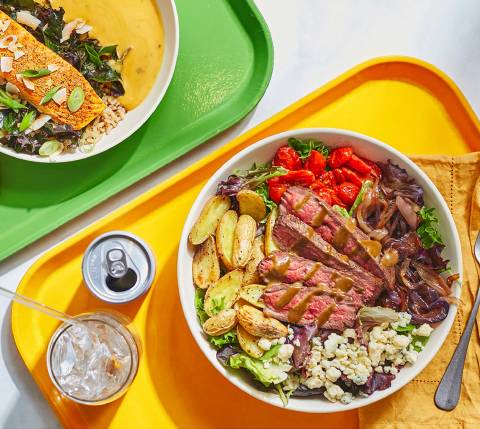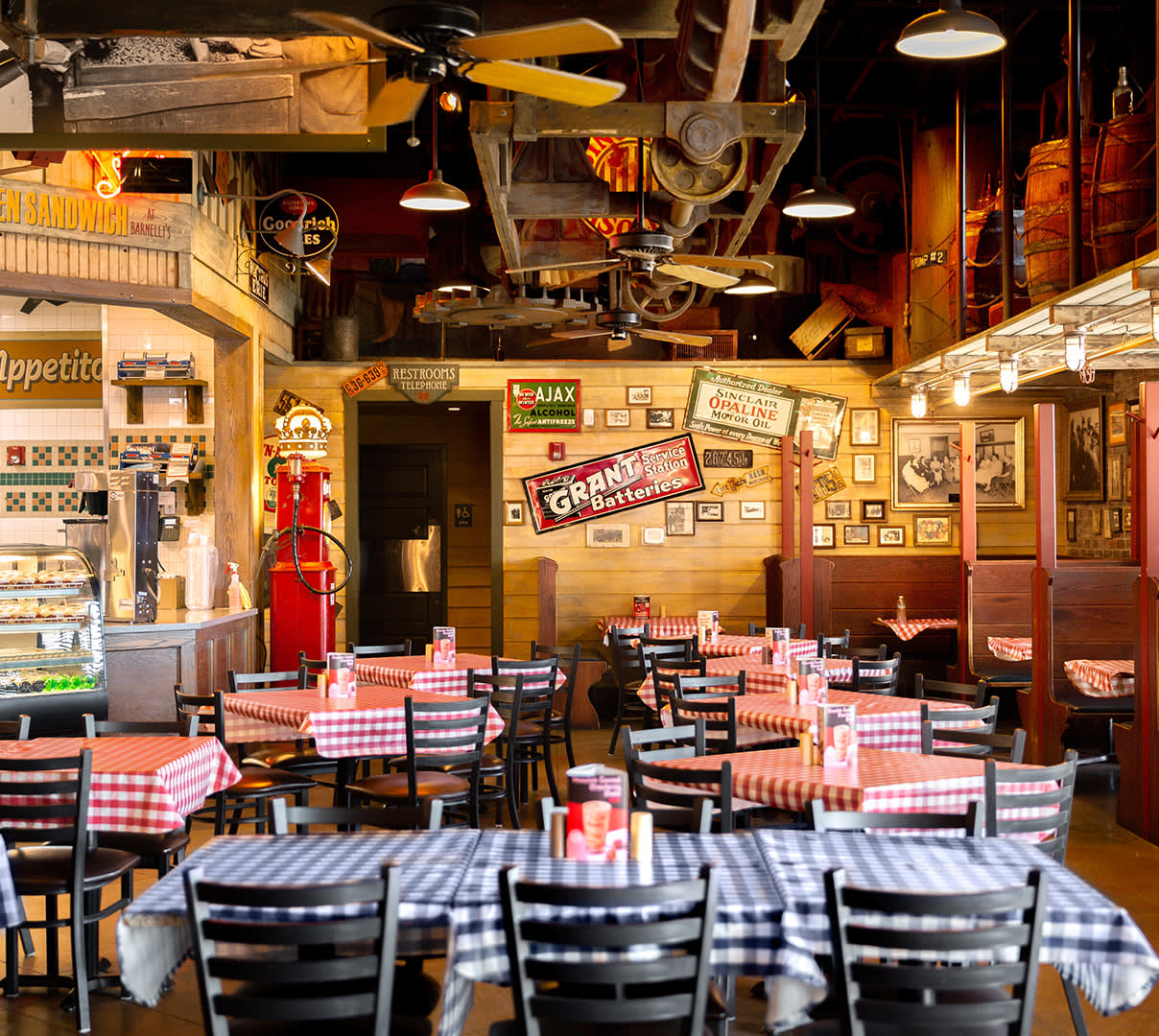In the restaurant business, staying competitive requires more than just serving good food. Driving restaurant brand awareness is key to any successful restaurant, helping foster loyalty among customers and drive new business. A consistent, memorable brand will help build trust among customers, unlocking more sales and a healthier business over the long term.
But where’s the best place to start when developing a restaurant brand? Here, we’ll share how to brand and promote your restaurant in five simple steps. Whether you're a new eatery building a brand from the ground up or an established operation looking for a refresh, these tips will help you create a restaurant brand that shines.
How to build your restaurant brand
Here’s how to craft an authentic brand that’ll boost your reputation among new customers and resonate with regulars.
Develop your mission and values
Start by thinking about the big picture, pulling inspiration from your restaurant’s original concept and vision. Do you have a compelling origin story that you can weave into your brand? What is the concept behind your restaurant, and why is it unique? As you write down the answers to these questions, you’ll start to notice what distinguishes your brand from the competition while remaining true to your guiding vision.
It’s also important to think about the why behind your business — in other words, your mission and values. Write a mission statement and value proposition if you haven’t already. Your mission statement is one to three sentences explaining why your restaurant exists, while your value proposition explains why people should choose your restaurant over others. Both of these should form the backbones of your brand identity.
Example restaurant mission statement
We relish the opportunity to create lifelong memories by igniting the senses with unrivaled food and experiences.
Example restaurant values
Family, Greatness, Energy, Fun
As more and more customers align their purchases with their values, it’s crucial to keep your mission front and center. Highlight your farm-to-table fare or responsibly sourced ingredients, which will attract socially conscious customers — especially millennial and Generation Z diners. Or perhaps your restaurant is family owned and operated, and creating a welcoming environment for other families is important to you. Whatever your values, make sure you integrate them when developing a restaurant brand.
Develop core messaging
After pinpointing your brand identity, it’s time to think about how you can best communicate them to the public. What do you want customers to take away from an encounter with your brand? Consider crafting three or four talking points that summarize your concept, mission, vision, and differentiators. What do you do well, and how do you do it? Keep your audience in mind while writing these to ensure an effective strategy.
Once you have your key messages written down, you and your staff can reference them when sending an email campaign or writing social media posts. Identifying these points and honing them before you start developing marketing assets will ensure your messaging stays consistent and furthers your restaurant brand awareness.
Determine your brand personality
An important part of restaurant brand development is defining your brand personality. Your restaurant’s personality, or voice and tone, should tie back to your overall concept. For example, a fast-casual restaurant might have a modern and conversational tone, while a fine dining concept may sound more formal and refined.
A helpful way to pinpoint the right personality is by thinking of your restaurant brand as a person. Choose a few words that describe it, from witty and irreverent to warm and sophisticated. Any marketing copy for your restaurant—including blogs, emails, and social media posts—should consistently reflect the voice and tone you’ve identified.

People come to our restaurant to get a taste of Brazilian cuisine along with the Southern hospitality that Texas is known for.
Develop a visual brand identity
Just as important as your messaging is your visual brand identity. Start by choosing a color palette that ties into your restaurant brand identity and personality, whether that means minimalist pastels or bright primary colors. Next, consider your logo. To maximize restaurant brand awareness, your logo should be simple and unique. It should be recognizable from anywhere, causing diners to want to go to your restaurant whenever they see it. Finally, choose a clean and simple font to make it easy for customers to read your menu and website.
Your visual identity will also determine the look and feel of any photos, illustrations, or other graphic design details used in your restaurant decor and marketing materials. For example, note how healthy fast-casual chain Modern Market uses bright, colorful backgrounds in their menu photos to underscore their mission to make people happier through food.

Ensure brand consistency across all channels
Remember: consistency is key. Once you’ve finalized all the elements of your brand identity, it’s critical to make them uniform across all in-person and online channels. A 2021 study found that brand consistency was responsible for anywhere between 10% and 20% of revenue growth in the majority of surveyed businesses, showing the importance of continuity when developing a restaurant brand.
As a result, your restaurant brand identity should be consistent across your website, social media, in-store decor, menu design, third-party review sites, uniforms, delivery platforms, and any other external-facing channel. These small elements come together to form one cohesive brand that customers will undoubtedly notice—and hopefully remember.
One way to ensure consistency is by developing a style guide that your staff can reference when creating marketing materials for your restaurant. A style guide should provide a detailed overview of everything regarding your brand, including key messages, color palettes, go-to fonts, and logos. How do you refer to your restaurant? What type of language do you want to avoid? Do you have preferences around specific words, capitalization, or grammar? Consider any guidelines that might be helpful to a staff member as they represent your restaurant to the outside world.
How to drive awareness for your restaurant brand
Now that you have a well-thought-out brand, it’s time to make it stick in the minds of customers and prospects. Leverage all available channels to promote awareness of your restaurant, keeping in mind the ways your target demographic is most likely to interact with you. These include:
In-store: Your in-store branding covers everything a customer might encounter during their dining experience, from the voicemail message they hear when making a reservation to the music you play as they dine. What will your decor look like? What uniforms will staff wear? What kind of takeout containers will you use? Think about the experience you want guests to have at your restaurant.
Online: Strengthening your online presence is a simple but effective way to reach more customers and drive restaurant brand awareness. Update your branding across every channel you use—including your online ordering website, social media accounts, email, Google Business profile, and review site profiles—to ensure consistency. But don’t stop there. Responding to customer questions, comments, and reviews online is a great way to build relationships and show off your restaurant brand personality.
Partnerships: Partnering with a third party platform that reaches a wide audience is a great way to increase restaurant brand awareness and grow your customer base. DoorDash connects restaurants to people in their area who are eagerly looking to place a pickup or delivery order for their next meal.
Community engagement: For customers to believe your mission is authentic, it’s important that you walk the walk and engage with your community. Consider joining forces with local schools or other organizations that align with your mission so you can generate trust among your diners while supporting a cause that’s important to you.
Drive awareness with a restaurant brand campaign
Once you've developed your restaurant brand, there’s no better way to spread the word than with a brand campaign. Choose an upcoming event or milestone — like opening a new location, celebrating your anniversary, launching a new menu item, or recognizing a social media holiday — as an opportunity to engage with customers and promote your new or refreshed brand.
When you drive awareness about your brand, it will give your restaurant the credibility it needs to help customers easily identify your business and build loyalty. To boost your awareness both online and in your neighborhood, learn more about getting started with DoorDash.





